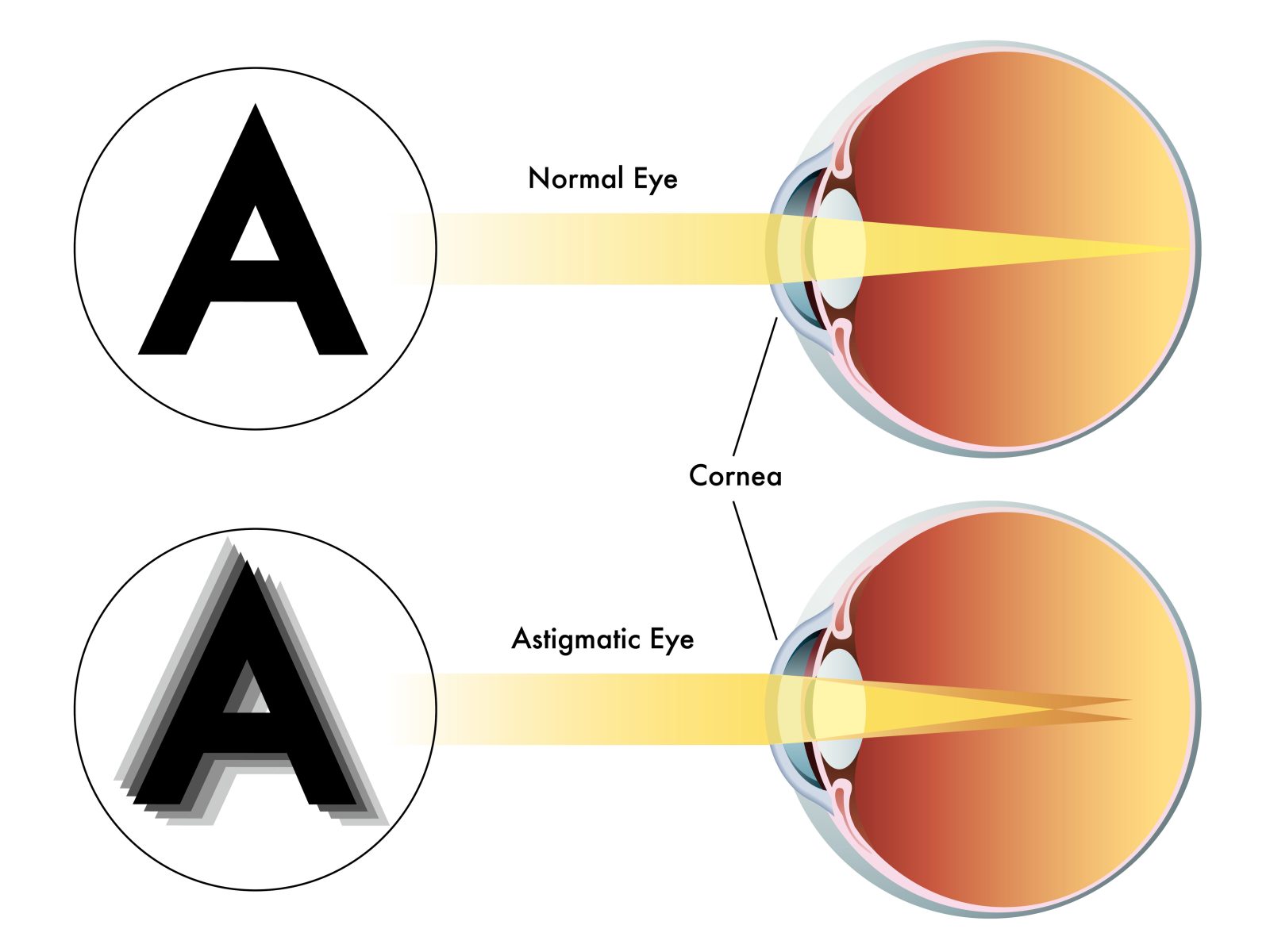What is Astigmatism?
Astigmatism is a common vision condition causing blurry sight from an abnormally curved cornea. With over 30 million diagnoses in America, many eyeglass and contact lens wearers want clarity.
Understanding Astigmatism
Similar to nearsightedness and farsightedness, astigmatism is a refractive error. But rather than simple near or far blur, astigmatism stems from an irregularly shaped cornea preventing proper focus. This causes both close and distant objects to appear fuzzy or distorted.
There are three main types of astigmatism:
- Myopic – One or both eye dimensions nearsighted
- Hyperopic – One or both dimensions farsighted
- Mixed – One nearsighted, one farsighted

Causes of Astigmatism
Astigmatism frequently develops from:
- Corneal shape – An oblong cornea prevents single-point focus
- Lenticular issues – An abnormal lens curve contributes to incorrect focus
Both scenarios redirect light in front and behind the retina, confusing vision.
Can Astigmatism Be Corrected?
Yes, today’s advanced eye surgeries like LASIK use laser precision to reshape the corneal curvature for proper light refraction onto the retina. By sculpting an irregular cornea into a rounder, normalized shape, vision clears often dramatically, even with high astigmatism levels.
If you struggle with eyeglasses and contacts, consult a refractive surgery specialist to see if reshaping your cornea is right for finally correcting vision. Many patients have achieved freedom from visual aids through today’s personalized vision correction technology.

